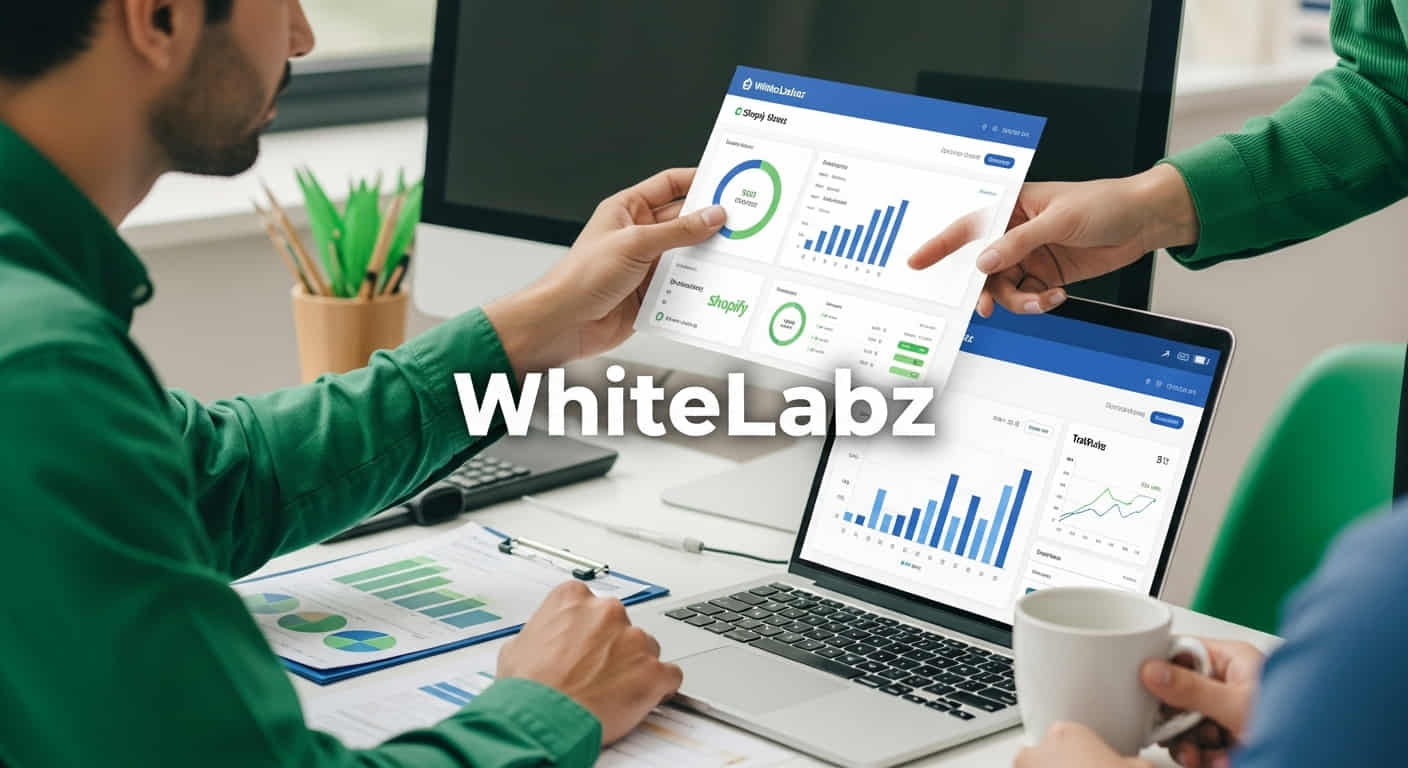I recently landed my first Shopify store client and was excited – but I quickly realized I needed specialized expertise to do the job right. Instead of struggling alone with Shopify’s quirks (like duplicate product URLs and theme limitations), I partnered with a White Label Digital Marketing Agency. They seamlessly became part of my team, communicating directly with the client and delivering a full-service SEO solution. This partnership allowed us to tackle every aspect of the project without hiring additional staff – as experts note, working with a white-label Shopify partner lets agencies expand their offerings “without investing in hiring, training, or managing an in-house development team”. In this post, I’ll share how this collaboration worked, the SEO strategies we used (full SEO, content, and conversion focus), and how it boosted our traffic and authority.
Overcoming Shopify SEO Challenges with a White-Label Partner
Shopify stores do offer built-in SEO tools like automatic sitemaps and canonical tags, but many optimizations still need manual effort. My white-label partner and I tackled these technical issues head-on. For example, Shopify often creates multiple URLs for a single product, so we fixed this by pointing all links to the main product page to preserve link equity.
We also focused on improving site speed – compressing images and streamlining code. This was important because even a 0.1-second load improvement can boost conversions by over 10%. Throughout the project, the white-label team acted as an extension of our business, handling the technical heavy lifting and client updates, which let me stay focused on core marketing efforts.
Implementing a Full SEO Strategy
With the technical foundation in place, we executed a full-spectrum SEO plan. Our approach covered every key area, from site performance to content and link-building. For example, we addressed site performance issues, carried out keyword optimization on product pages, and ramped up content and backlink strategies all at once.
-
Technical SEO: We resolved structural issues and improved Core Web Vitals (such as speed and mobile responsiveness), ensuring the store met modern search standards.
-
On-Page Optimization: We optimized titles, meta descriptions, and product copy with target keywords. We also added rich schema markup so Google could better understand our products. We double-checked that Shopify’s automatic features (canonical tags and XML sitemap) were correctly set up.
-
Content Creation: We produced helpful, in-depth content for both product pages and the blog. This meant writing detailed guides and articles that answered customer questions. Google’s latest guidelines emphasize “original, high-value, people-first content,” and research shows that comprehensive articles significantly outperform thin content in rankings. By crafting valuable content, we improved the site’s relevance and kept users engaged longer.
-
Off-Page SEO (Backlinks): We earned quality backlinks from industry-related sites to build domain authority. This is crucial because studies show that sites with higher overall link authority tend to rank better.
Together, these steps represented a full SEO approach: covering technical, on-page, content, and off-page factors in a coordinated way.
Focusing on Quality Content and Conversions
A key part of our strategy was prioritizing content quality and conversions, not just rankings. In line with Google’s recent updates, we emphasized user-focused, well-researched articles. For example, we published blog posts that answered common customer questions in detail, and we made sure every page offered genuine value. Research indicates that this kind of comprehensive content leads to higher rankings. We also improved the user experience by speeding up the site and clarifying calls to action. (As Search Engine Land reminds us, the ultimate goal of SEO is to boost conversions and revenue, not just search position.)
Project Results: Increased Traffic and Authority
The results were very positive. Within a few months, organic traffic to the store increased significantly. Even a modest rise in rank drove many new visitors – after all, the top Google search result captures about 27.6% of clicks. In fact, in a similar Shopify SEO case study, one site’s traffic grew from 4,000 to over 60,500 visitors per month (an exponential jump). In our project, we likewise saw our store climb many keyword positions and attract far more qualified visitors.
We also improved the conversion rate by giving shoppers a faster, more informative experience. For example, our client’s conversion rate climbed noticeably as we eliminated friction points and provided better content – underscoring that SEO success is measured in sales, not just clicks. Overall, the store’s search visibility and credibility grew, helping to drive more revenue for the client.
Conclusion and Call to Action
Partnering with WhiteLabz was a game-changer for my first Shopify SEO project. They provided expert-level work at a cost-effective price – as one review noted, white-label solutions offer “high-quality services at a competitive price”. In other words, I was able to deliver excellent SEO service to my client without expanding my own team or overhead. If you’re an agency or business facing similar challenges, I highly recommend exploring white-label experts. For those interested, you can learn more or get started with White Label Digital Marketing Agency at whitelabeldigitalmarketingagency.com – they helped me succeed with this project, and they can help your Shopify store (or other clients) too.





Comments are closed